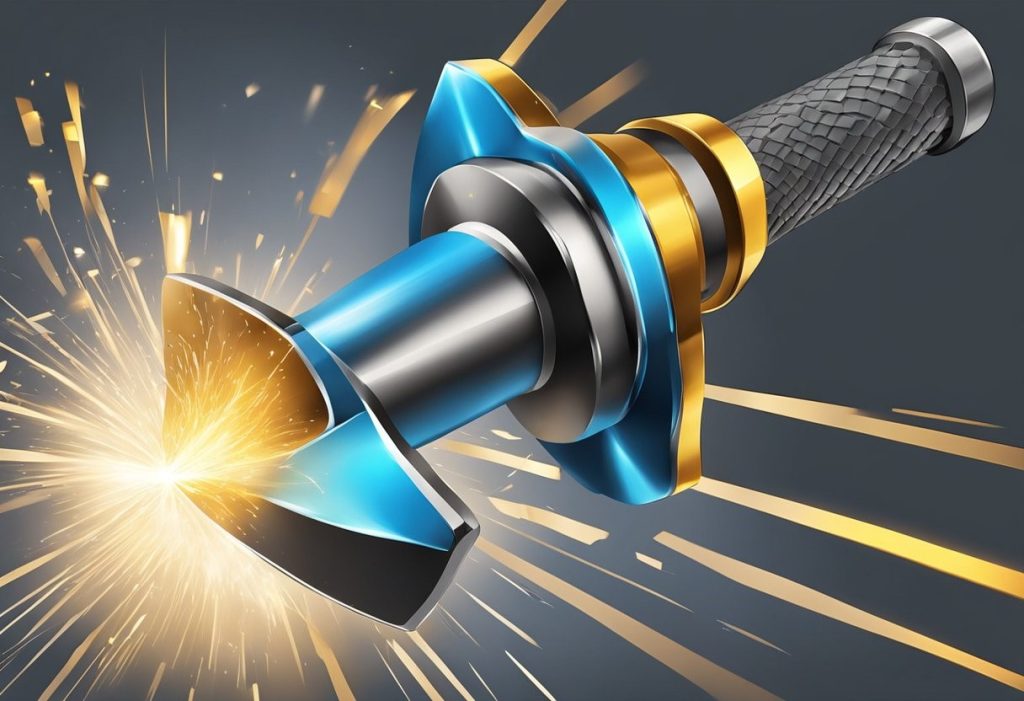
A cross peen hammer is a type of hammer that features a wedge-shaped head with a flat face on one end and a tapering, pointed end on the other. The pointed end is known as the cross peen and is typically used for tasks such as shaping metal, riveting, and setting nails. The flat face, on the other hand, is used for general hammering tasks.
One of the primary advantages of a cross peen hammer is its versatility. The pointed end allows for precision work, while the flat face can be used for heavier-duty tasks. This makes it a popular choice among blacksmiths, metalworkers, and carpenters alike. Additionally, the wedge-shaped head of the hammer helps to distribute force evenly, reducing the risk of damage to the workpiece.
Despite its versatility, the cross peen hammer is not always the best choice for every task. For example, its pointed end may not be suitable for tasks that require a domed or rounded shape. However, for tasks that require a flat or angled shape, the cross peen hammer can be an excellent choice. Overall, it is a reliable and useful tool that has been used for centuries in a variety of trades.
Design and Features
Head Composition
The cross peen hammer is a type of hammer that features a flat face on one end and a wedge-shaped, cross peen on the other. The head of the hammer is typically made of steel or iron, which provides durability and strength. The weight of the head can vary depending on the intended use of the hammer.
Handle Types
The handle of the cross peen hammer is an important feature to consider when selecting a hammer. The handle can be made of wood, fiberglass, or steel. Wood handles are lightweight and absorb shock well, but can be prone to splitting or breaking. Fiberglass handles are durable and resistant to shock, but can be heavier than wood handles. Steel handles are the most durable and resistant to damage, but can be heavy and transmit more shock to the user’s hand.
Peen Orientation
The cross peen orientation of the hammer is what sets it apart from other types of hammers. The peen is angled perpendicular to the handle and can be used for a variety of tasks, such as shaping metal or driving nails in tight spaces. The flat face of the hammer can be used for general carpentry tasks, such as framing or finishing.
Overall, the cross peen hammer is a versatile tool that is useful for a variety of tasks. Its unique design and features make it a valuable addition to any toolbox.
Applications and Usage
Metalworking Techniques
The cross peen hammer is a versatile tool that is commonly used in metalworking. The hammer’s unique shape allows it to be used for a variety of metalworking techniques, including shaping, forming, and riveting. The flat face of the hammer is perfect for flattening and smoothing metal surfaces, while the peen side is ideal for creating textures and forming curves.
Riveting Fundamentals
One of the most common uses of the cross peen hammer is for riveting. When using a cross peen hammer for riveting, the flat end of the hammer is used to flatten the rivet head, while the peen end is used to shape and form the rivet. This technique is essential in creating a strong and secure rivet joint.
Woodworking Adaptations
While the cross peen hammer is primarily used in metalworking, it can also be adapted for use in woodworking projects. The hammer’s flat end can be used for driving nails and the peen end can be used for creating decorative textures on wood surfaces. However, it is important to note that using a cross peen hammer on wood can cause damage to the surface, so it should only be used for decorative purposes.
Overall, the cross peen hammer is a valuable tool for metalworkers and can also be adapted for use in woodworking projects. Its unique shape and versatility make it an essential tool in any workshop.